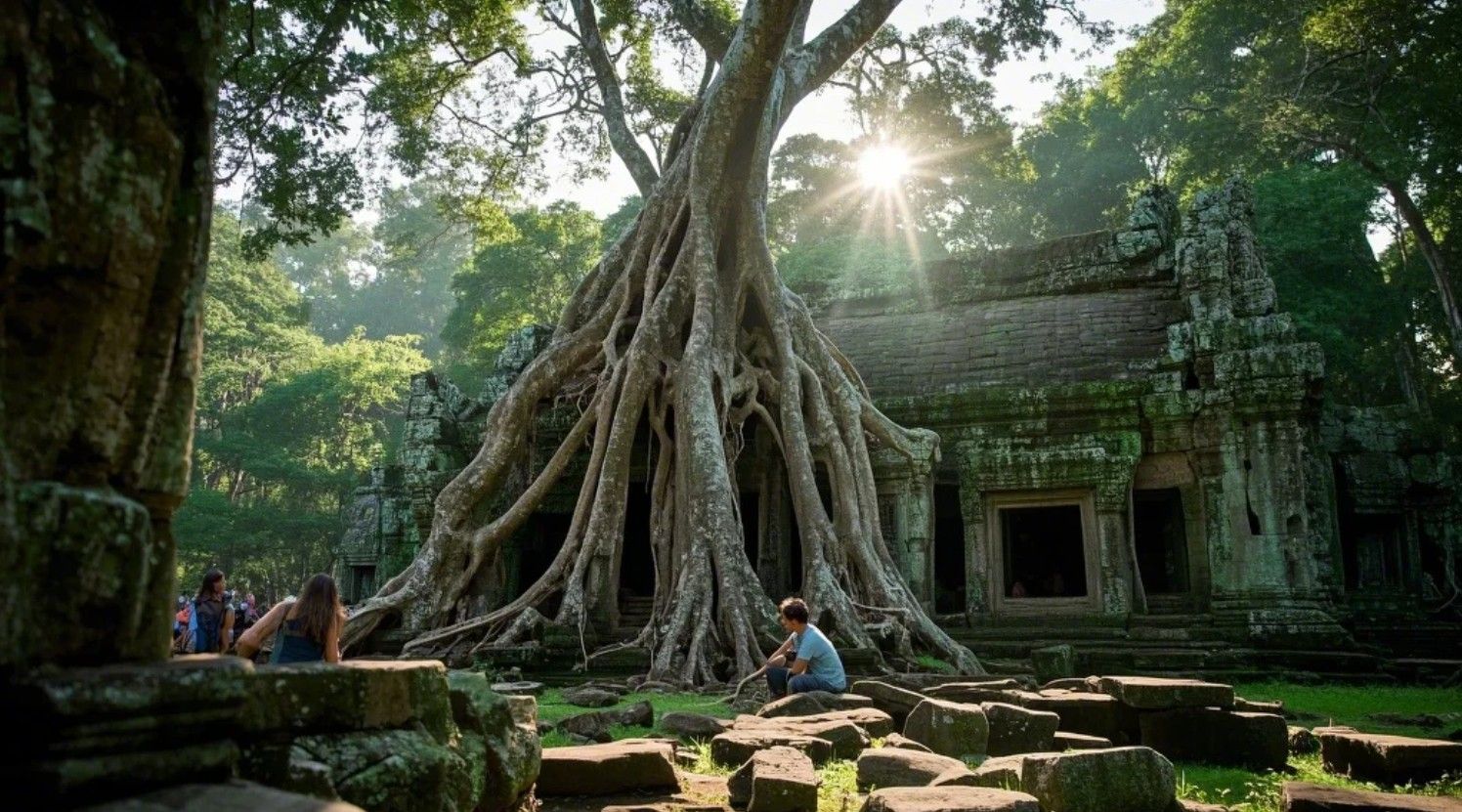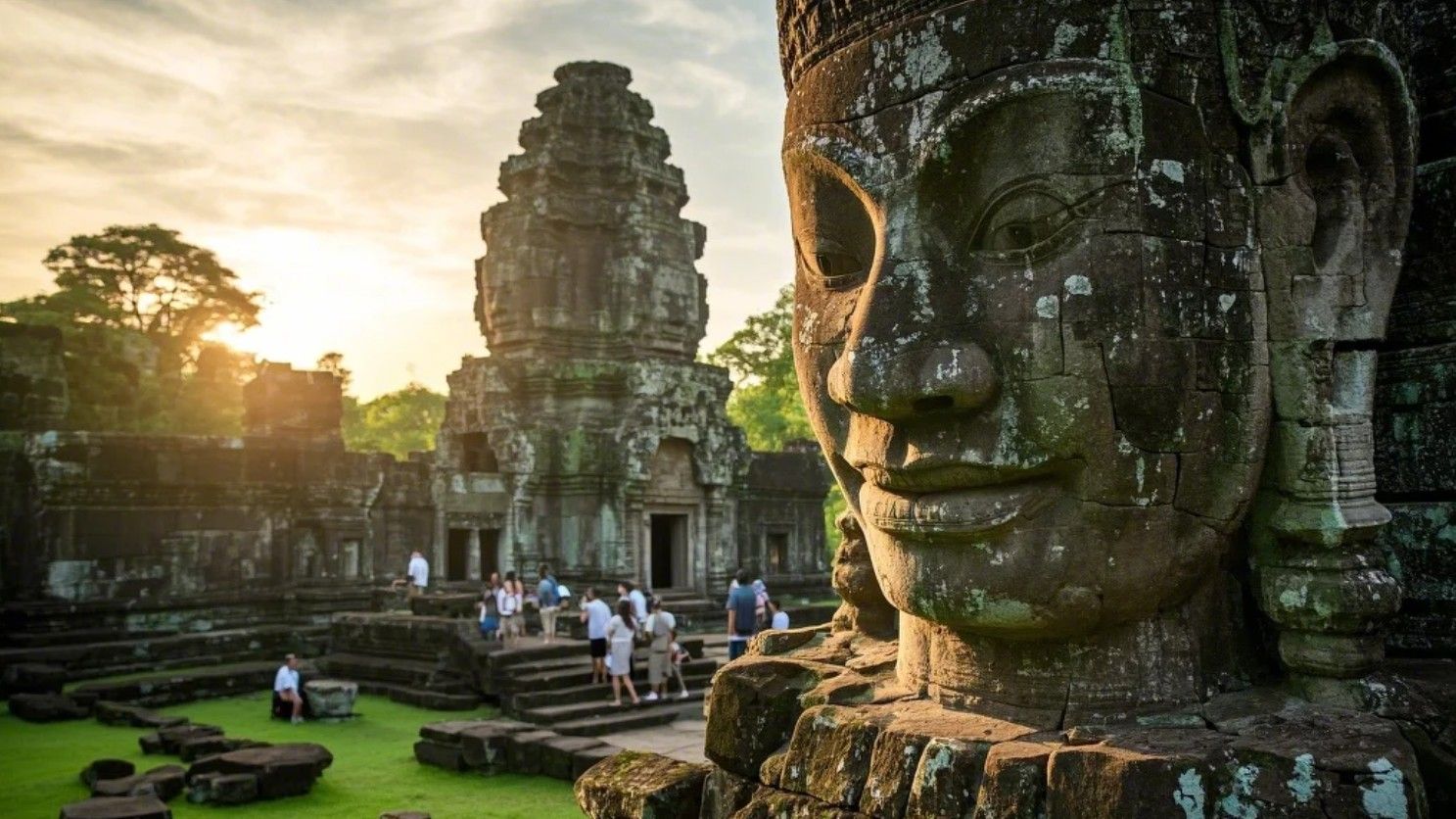Exploring the Temples of Angkor Wat, Cambodia
| The temples of Angkor Wat, located in Siem Reap, Cambodia, are one of the most awe-inspiring archaeological sites in the world. Built between the 9th and 15th centuries, these ancient temples are a testament to the grandeur of the Khmer Empire and a UNESCO World Heritage Site. Exploring Angkor Wat is like stepping back in time, where intricate carvings, towering spires, and mystical atmosphere transport you to a bygone era. In this article, I’ll share my experience exploring the temples of Angkor Wat, along with practical tips and insights to help you plan your own unforgettable journey. Why Visit Angkor Wat? Angkor Wat is more than just a collection of temples—it’s a cultural and historical treasure that offers:  Architectural Marvels: The temples showcase the brilliance of Khmer architecture, with intricate carvings, bas-reliefs, and symmetrical designs. Spiritual Significance: Angkor Wat was originally a Hindu temple dedicated to Vishnu and later transformed into a Buddhist site. Natural Beauty: The temples are surrounded by lush jungles, reflecting pools, and serene landscapes. Adventure: Exploring the vast complex feels like an adventure, with hidden corners and lesser-known temples waiting to be discovered. Pro Tip: Angkor Wat is a year-round destination, but the best time to visit is during the dry season (November to March), when the weather is cooler and skies are clear. Planning Your Visit Planning is essential to make the most of your trip to Angkor Wat. Here’s what you need to know: 1. Getting There Fly: The nearest airport is Siem Reap International Airport, which is well-connected to major cities in Asia. Visa: Most travelers can obtain a visa on arrival or apply for an e-visa online. 2. Tickets Tickets to Angkor Wat are sold at the Angkor Ticket Office and come in three options: 1-Day Pass: $37 3-Day Pass: $62 (valid for 10 days) 7-Day Pass: $72 (valid for 30 days) Pro Tip: Purchase your ticket the evening before to catch the sunrise at Angkor Wat without waiting in line. 3. Transportation The temple complex is vast, so you’ll need transportation to get around: Tuk-Tuk: A popular and affordable option, with drivers often doubling as guides. Bicycle: For the adventurous, cycling is a great way to explore at your own pace. Private Car or Van: Ideal for groups or those who prefer comfort. Pro Tip: Hire a licensed guide to learn about the history and significance of the temples. My Experience Exploring Angkor Wat Here’s a snapshot of my 3-day journey through the temples of Angkor Wat: Day 1: Angkor Wat and Angkor Thom I started my trip with the iconic Angkor Wat, the largest religious monument in the world. Watching the sunrise over its majestic towers was a surreal experience. I spent the morning exploring the temple’s intricate carvings and bas-reliefs, which depict scenes from Hindu mythology. In the afternoon, I visited Angkor Thom, the last capital of the Khmer Empire. Highlights included the Bayon Temple, known for its giant stone faces, and the Terrace of the Elephants, a grand viewing platform. Day 2: Ta Prohm and Banteay Srei On the second day, I explored Ta Prohm, a temple famously overgrown with trees and featured in the movie Tomb Raider. The interplay of nature and architecture was mesmerizing. In the afternoon, I visited Banteay Srei, a smaller temple known for its exquisite pink sandstone carvings. The intricate details and craftsmanship were unlike anything I’d ever seen. Day 3: Preah Khan and Lesser-Known Temples My final day was dedicated to exploring Preah Khan, a sprawling temple complex with hidden passageways and atmospheric ruins. I also visited lesser-known temples like Neak Pean and Ta Som, which offered a quieter and more intimate experience. Must-See Temples in Angkor Wat Here are some of the top temples you shouldn’t miss: Angkor Wat: The crown jewel of the complex, known for its grand scale and intricate carvings. Bayon Temple: Famous for its 216 stone faces and stunning bas-reliefs. Ta Prohm: A temple reclaimed by nature, with tree roots intertwining with the ruins. Banteay Srei: A smaller temple with exquisite pink sandstone carvings. Preah Khan: A labyrinthine temple with a mystical atmosphere. Pro Tip: Visit Beng Mealea, a remote temple located about 40 kilometers from Siem Reap, for a more adventurous experience. Tips for Exploring Angkor Wat Here are some practical tips to enhance your visit: Start Early: Arrive at Angkor Wat before sunrise to avoid crowds and witness the temple bathed in golden light. Dress Modestly: Wear clothing that covers your shoulders and knees, as the temples are sacred sites. Stay Hydrated: Carry plenty of water, as the heat and humidity can be intense. Wear Comfortable Shoes: The temples involve a lot of walking and climbing, so sturdy footwear is essential. Respect the Site: Avoid touching carvings, climbing on fragile structures, or littering. Pro Tip: Bring a guidebook or download an audio guide to learn about the history and significance of each temple. Beyond the Temples While the temples are the main attraction, Siem Reap offers plenty of other activities: Floating Villages: Visit Kampong Phluk or Chong Kneas to see life on the water. Local Markets: Explore Psar Chas (Old Market) for souvenirs, handicrafts, and street food. Cultural Shows: Watch a traditional Apsara dance performance to experience Cambodian culture. Tonle Sap Lake: Take a boat tour to see the largest freshwater lake in Southeast Asia. Pro Tip: Try Cambodian cuisine, such as Amok (coconut curry) and Lok Lak (stir-fried beef), at local restaurants. Budgeting for Your Trip Here’s a rough estimate of costs for a 3-day trip to Angkor Wat:  Accommodation: 20–50 per night (budget to mid-range hotels). Food: 10–20 per day (local restaurants and street food). Transportation: 15–30 per day (tuk-tuk or bicycle rental). Activities: 20–50 (tours and entrance fees). Pro Tip: Bargain politely when hiring tuk-tuk drivers or buying souvenirs at markets. The Impact of My Journey Exploring the temples of Angkor Wat was a humbling and inspiring experience. The sheer scale and beauty of the temples left me in awe, while the warmth and resilience of the Cambodian people touched my heart. It was a journey that deepened my appreciation for history, culture, and the enduring spirit of humanity. Conclusion The temples of Angkor Wat are a must-visit destination for any traveler. From the grandeur of Angkor Wat to the mystical atmosphere of Ta Prohm, these ancient temples offer a glimpse into the rich history and culture of Cambodia. By planning carefully, respecting the site, and embracing the adventure, you can create memories that will last a lifetime. So pack your bags, grab your camera, and get ready to explore the wonders of Angkor Wat—a journey you’ll never forget! |
jack
|
2025.03.21




